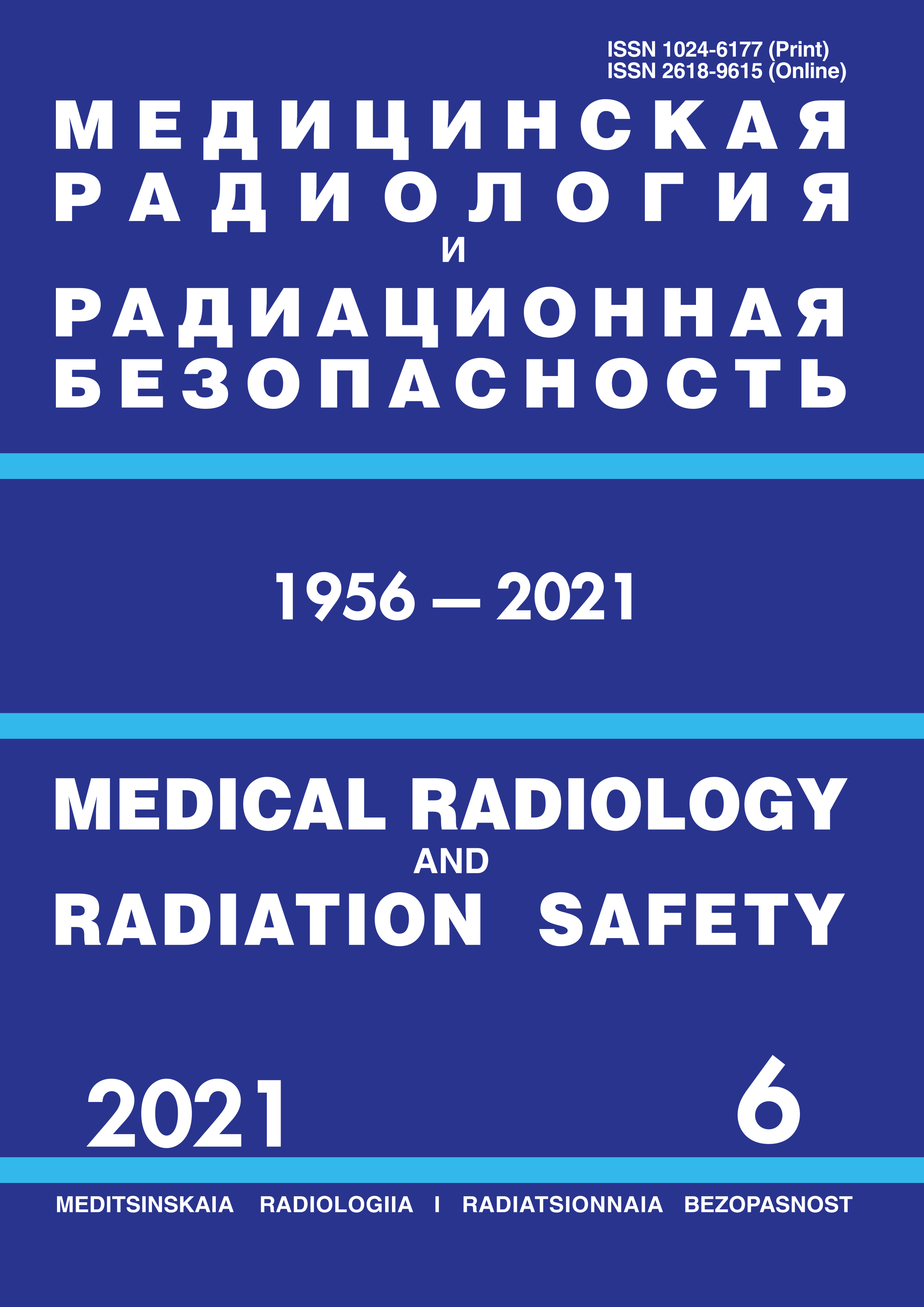Institute of Biomedical Problems, Russian Academy of Sciences (Junior Researcher)
Russian Federation
Russian Federation
Institute of Biomedical Problems, Russian Academy of Sciences (Junior Researcher)
Russian Federation
Institute for Biomedical Problems
A.I. Burnasyan Federal Medical Biophysical Center (FMBC) FMBA
Russian Federation
CSCSTI 76.33
CSCSTI 76.03
Russian Classification of Professions by Education 31.06.2001
Russian Classification of Professions by Education 31.08.08
Russian Classification of Professions by Education 32.08.12
Russian Classification of Professions by Education 14.04.02
Russian Library and Bibliographic Classification 534
Russian Library and Bibliographic Classification 51
Russian Trade and Bibliographic Classification 5712
Russian Trade and Bibliographic Classification 5734
Russian Trade and Bibliographic Classification 6212
Russian Trade and Bibliographic Classification 5708
Purpose: Assessing the role of various factors in the formation of radioresistance is an important branch of radiobiology. The quality of drinking water, as it turned out, can significantly affect radioresistance. Against the background of studying the antiradiation properties of various types of water, differing in mineral and isotopic composition, the problem of the influence of tap water on the course of radiation injury remained underestimated. This circumstance determined the purpose of the work: to evaluate the modifying effect of tap water on the course of acute radiation sickness after X-ray irradiation of mice at an average lethal dose. Material and methods: Female ICR (CD-1) mice were irradiated with an average lethal dose once – 6.5 Gy of X-ray irradiation. After irradiation, half of the mice received tap water as drinking water, and the other half received artificially mineralized drinking water. Results: Keeping animals on tap water significantly reduced the survival rate of mice both with a single dose (log-rank test p=0.02, χ2=5.38) compared with animals receiving artificially mineralized distilled water. In addition, in the group of mice that received tap water, an increase in the rate of death of mice and a lower preservation of the group mass of animals during the development of acute radiation injury was noted. Conclusion: Tap water, used as drinking water, increases the damaging effect of radiation when X-rays are irradiated in mice.
tap water, artificially mineralized distilled water, X-ray irradiation, survival rate, mortality rate, mice, model
1. Yagunov A.S., Reeves G.I., Tokalov S.V., Chukhlovin A.B., Afanassiev B.V. Animal Studies of Residual Hematopoietic and Immune System Injury from Low Dose/Low Dose Rate Radiation and Heavy Metals. Bethesda: MD: Armed Forces Radiobiology Research Institute, 1998. (AFFRI). DOIhttps://doi.org/10.13140/2.1.3584.0007.
2. Carpenter D.O., Bushkin-Bedient S. Exposure to Chemicals and Radiation During Childhood and Risk for Cancer Later in Life // J. Adolesc Health. 2013. V.52, No. 5. P. 21-29. doihttps://doi.org/10.1016/j.jadohealth.2013.01.027.
3. Vacek A., Sikulová J., Bartonícková A. Radiation Resistance in Mice Increased Following Chronic Application of Li2CO3 // Acta Radiol Oncol. 1982. V. 21. No. 5. P. 325-330. DOI:10.3109 /02841868209134023.
4. Chlorinated Drinking-Water; Chlorination by-Products; Some other Halogenated Compounds; Cobalt and Cobalt Compounds. International Agency for Research on Cancer (IARC) Working Group, Lyon, 12-19 June 1990 // IARC Monogr Eval Carcinog Risks Hum. 1991. No. 52. P. 45-399.
5. National Toxicology Program. NTP Toxicology and Carcinogenesis Studies of Chlorinated Water (CAS Nos. 7782-50-5 and 7681-52-9) and Chloraminated Water (CAS No. 10599-90-3) (Deionized and Charcoal-Filtered) in F344/N Rats and B6C3F1 Mice (Drinking Water Studies) // Natl Toxicol Program Tech Rep Ser. 1992. No. 392. P. 1-466.
6. Sanitarno-epidemiologicheskie pravila i normativy SanPiN 2.1.4.1074-01 Pit'evaya voda. Gigienicheskie trebovaniya k kachestvu vody centralizovannyh sistem pit'evogo vodosnabzheniya. Kontrol' kachestva. Gigienicheskie trebovaniya k obespecheniyu bezopasnosti sistem goryachego vodosnabzheniya.
7. Kaplan E.L., Meier P. Non-Parametric Estimation from Incomplete Observations // J. Am. Stat. Assoc. 1958. V. 53, No. 282. P. 457-481.
8. Sacher G.A. On the Statistical Nature of Mortality, with Especial Reference to Chronic Radiation Mortality // Radiology. 1956. V.67, No. 2. P. 250-258. doi:https://doi.org/10.1148/67.2.250.
9. WHO Library Cataloging in publication data Guidelines for drinking water quality. WHO, 2011. P. 584.
10. Rahmanin Yu.A. Biofizika vody: kvantovaya nelokal'nost' v tehnologiyah vodopodgotovki, regulyatornaya rol' associirovannoy vody v kletochnom metabolizme, normirovanie bioenergeticheskoy aktivnosti pit'evoy vody / Pod red. Rahmanina Yu.A., Stehina A.A., Yakovlevoy G.V. M.: URSS, 2016. 346 s.
11. Ivanov A.A., Andrianova I.E., Mal'cev V.N., Shal'nova G.A., Stavrakova N.M., Bulynina T.M., Dorozhkina O.V., Karaulova T.A., Gordeev A.V., Bushmanov A.Yu. Vliyanie pit'evoy vody razlichnogo kachestva na intaktnyh i obluchennyh myshey // Gigiena i sanitariya. 2017. № 9. S. 854-860. DOIhttps://doi.org/10.18821/0016-9900-2017-96-9-854-860.
12. Laissue J.A., Altermatt H.J., Bally E., Gebbers J.O. Protection of Mice from Whole Body Gamma Irradiation by Deuteration of Drinking Water: Hematologic Findings // Exp. Hematol. 1987. V.15, No. 2. P.177-180.
13. Ivanov A.A., Ushakov I.B., Kulikova E.I., Kryuchkova D.M., Severyuhin Yu.S., Vorozhcova S.V., Abrosimova A.N., Gaevskiy V.A., Sinyak Yu.E., Grigor'ev A.I. Legkoizotopnaya voda - sredstvo lecheniya ostroy luchevoy bolezni // Aviakosmicheskaya i ekologicheskaya medicina. 2013. T. 47, № 5. S. 40-44.
14. Abrosimova A.N., Rakov D.V., Sinyak Yu.E. Vliyanie «legkoy vody» na razvitie pomutneniya hrustalika u myshey posle mnogokratnogo γ-oblucheniya v nizkih dozah // Aviakosmicheskaya i ekologicheskaya medicina. 2009. T. 43, № 2, S. 29-32
15. Kulikova E.I., Kryuchkova D.M., Severyuhin Yu.S., Gaevskiy V.N., Ivanov A.A. Radiomodificiruyuschie svoystva vody s ponizhennym soderzhaniem deyteriya i tyazhelyh izotopov kisloroda // Aviakosmicheskaya i ekologicheskaya medicina. 2012. T. 46. № 6. S. 45-50.
16. Kryuchkova D.M., Andrianova I.E., Kovalenko M.A. i dr. Vliyanie mineraloorganicheskogo kompleksa na radiorezistentnost' myshey // Aviakosmicheskaya i ekologicheskaya medicina. 2013. T. 47. № 5. S. 37-40.
17. Cantor K.P., Hoover R., Hartge P., et al. Bladder Cancer, Drinking Water Source, and Tap Water Consumption: a Case-Control Study // J. Natl. Cancer Inst. 1987. V. 79. No. 6. P.1269-1279.
18. Ishidate M.Jr., Sofuni T., Yoshikawa K., Hayashi M., et al. Primary Mutagenicity Screening of Food Additives Currently Used in Japan // Food and Chemical Toxicology 1984. V.22, No. 8. P. 623-636. doi.org/10.1016/0278-6915(84)90271-0.
19. Eltahawy N.A., Sarhan O.M., Hammad A.S., et al. Effects of Combined Exposure to Aluminum Chloride and γ-Radiation on Histological and Ultrastructure of Intestinal Paneth Cells // Radiat. Res. Appl. Sci. 2016. No. 9. P. 400-408. doi.org/10.1016/j.jrras.2016.05.007.





